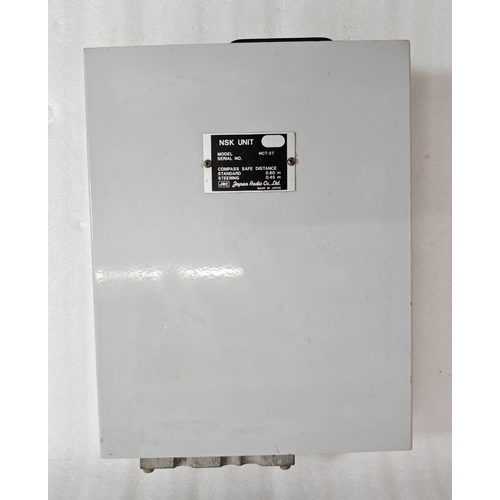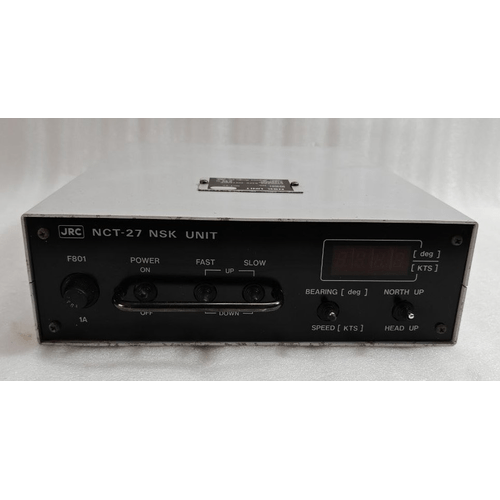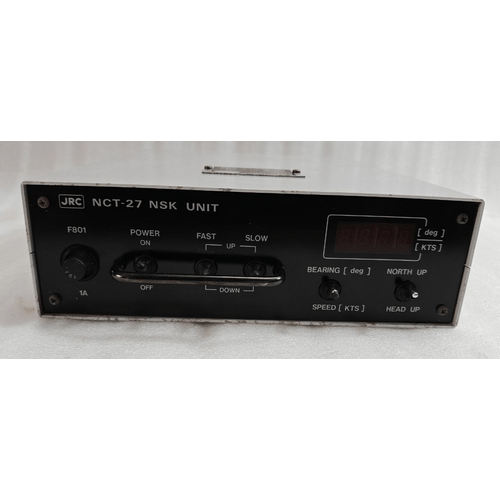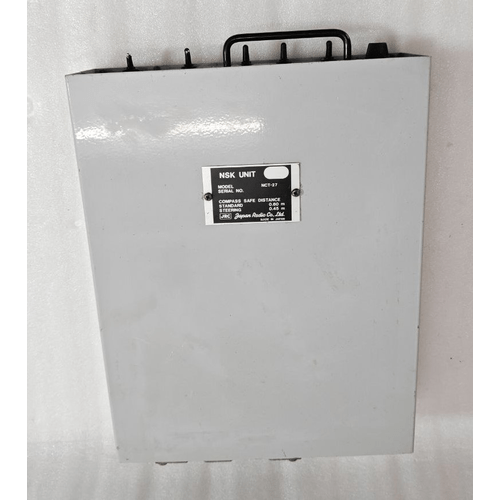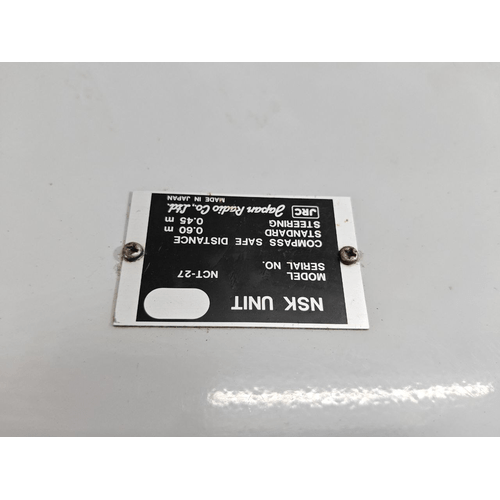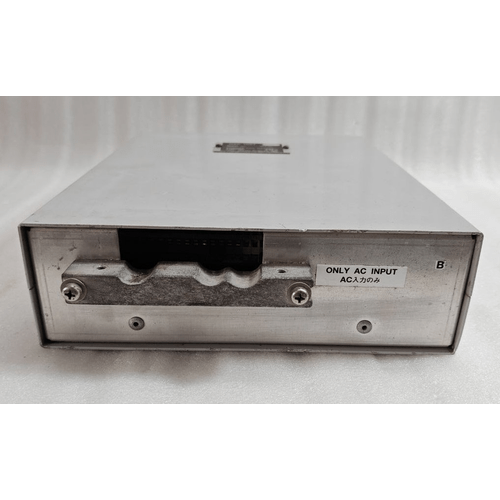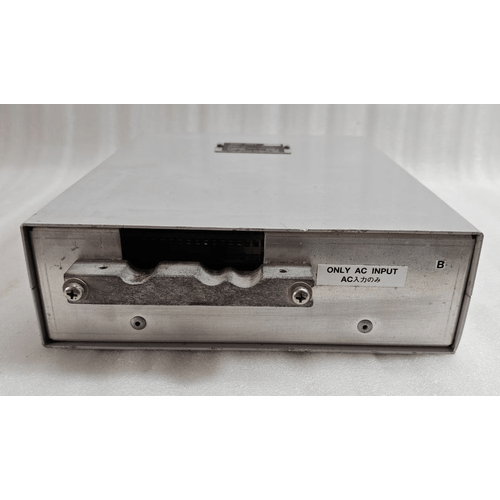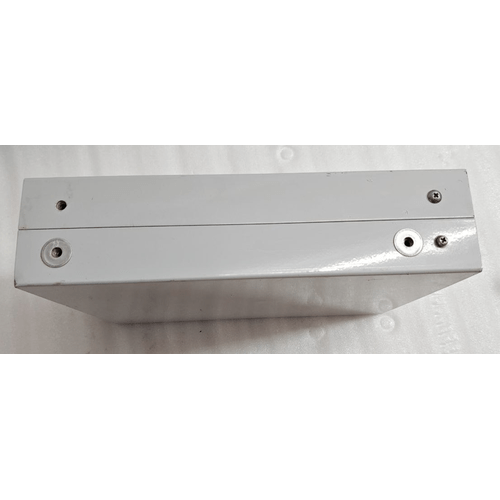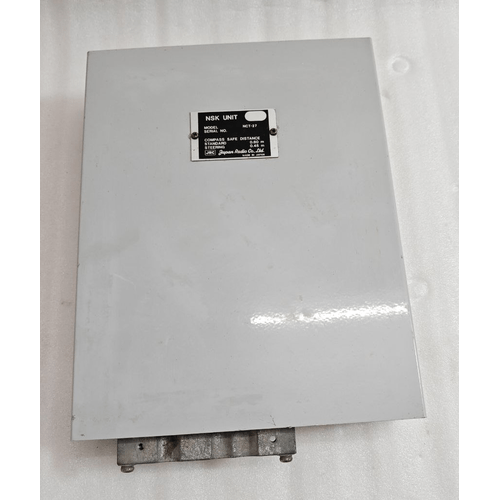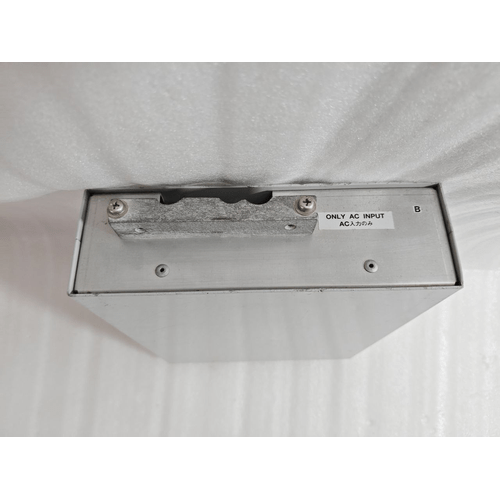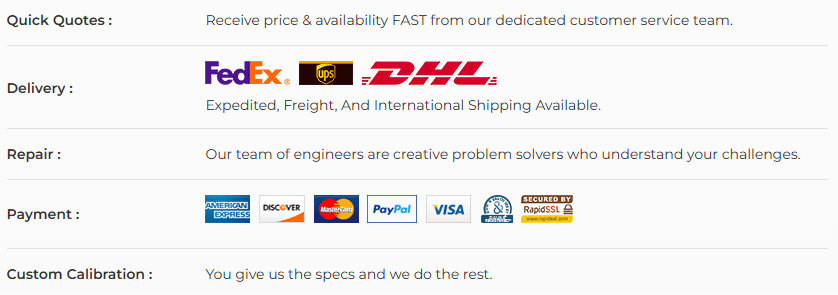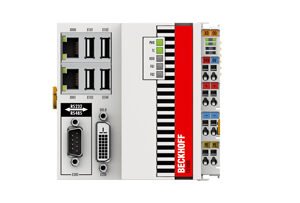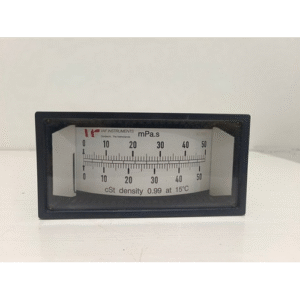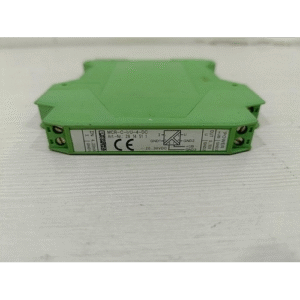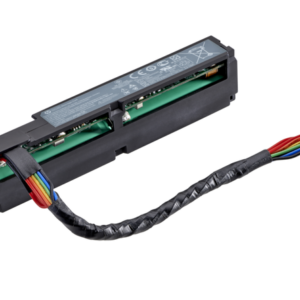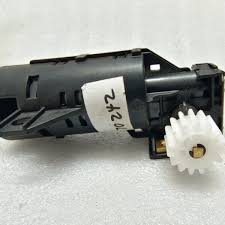The JRC NCT-27 is a specialized Navigation Sensor Interface or Data Converter Unit, often referred to as an NSK Unit (a common JRC model prefix). Manufactured by Japan Radio Co., Ltd. (JRC), this device is a critical, albeit behind-the-scenes, component of an integrated marine Bridge Navigation System.
Its primary function is to act as a central data hub, collecting information from various ship sensors and converting it into a standardized digital format (like NMEA 0183 or IEC 61162) for distribution to other navigation equipment on the bridge.
Key Features
-
Data Gateway & Central Hub: Consolidates data from multiple analog and digital sources into a single, unified data stream.
-
Signal Conversion: Converts proprietary or analog sensor signals into standard marine electronic communication protocols (e.g., NMEA 0183 sentences).
-
System Integration: Enables different brandsof equipment to “talk” to each other. For example, it can take gyrocompass data from one manufacturer and feed it to a radar, ECDIS, and autopilot from other manufacturers.
-
Isolation & Buffering: Protects sensitive navigation equipment from electrical noise and faults on sensor lines.
-
Data Prioritization: Some advanced units can manage data from multiple sources of the same type (e.g., two GPS receivers) and select the best one to use or provide a fallback in case of failure.
-
Rugged Marine Construction: Built to withstand the harsh vessel environment, including vibration, temperature fluctuations, and humidity. Typically compliant with marine standards like IEC 60945.
Technical Specifications (Inferred from Common NSK Unit Functions)
| Parameter | Specification / Description | Notes |
|---|---|---|
| Manufacturer | Japan Radio Co., Ltd. (JRC) | A leading manufacturer of marine electronics. |
| Model Number | NCT-27 | “NSK” is likely the series name. |
| Type | Navigation Sensor Interface / Data Bridge / Converter | |
| Typical Inputs | Accepts data from sensors such as: • Gyrocompass (Heading) • GPS Receiver (Position, COG, SOG) • Log (Speed Through Water) • Wind Sensor (Wind Speed & Direction) • AIS (Other vessels’ data) |
Inputs are likely a mix of analog (synchro) and digital (RS-232/422). |
| Typical Outputs | Distributes converted data to display units such as: • Radar/ARPA • ECDIS (Electronic Chart System) • Autopilot • AIS Transponder • VDR (Voyage Data Recorder) |
Outputs are typically standard NMEA 0183 serial data. |
| Power Supply | 24 VDC (Standard for commercial vessels) or 110/220 VAC. | |
| Communication Protocols | NMEA 0183, IEC 61162, potentially NMEA 2000 or proprietary JRC protocols. | |
| Mounting | Designed for 19-inch rack mounting in an equipment cabinet or console. | This is where the main processing units are stored, separate from the bridge displays. |
| Indicators | LED status indicators for power and data activity on each channel. |
Application & Usage
-
System Backbone: This unit is the central nervous system of a modern integrated bridge. It ensures that every navigational device has access to accurate, synchronized data.
-
Mandatory for VDR: A Voyage Data Recorder (the “black box” for ships) requires a consolidated feed of all navigation data. The NCT-27 often serves as the primary source for this data.
-
Retrofitting & Compatibility: Essential when adding new equipment (like a modern ECDIS) to a older vessel, allowing the new display to interface with existing legacy sensors.
Important Notes
-
The “1182” Number: This is almost certainly a serial number or a specific factory/batch code. It is crucial for identifying the exact unit and its manufacturing details.
-
Not a Display Unit: The NCT-27 is an interface unit. It would be installed in an equipment rack or cabinet (often located in a chart room or behind the bridge), not on the console with the user displays.
-
Configuration: These units often require professional setup and configuration to map the correct input data to the required output sentences for the connected equipment.
-
Professional Installation: Must be installed and configured by a qualified marine electrician or electronics technician familiar with NMEA data systems.
Where to Find More Information
-
JRC (JRC Alpine) Official Support: The best source for the official technical manual, wiring diagrams, and configuration guide for the NCT-27.
-
Marine Electronics Integrators: Companies that specialize in installing and servicing integrated bridge systems will have experience with these JRC interface units.
-
Vessel Documentation: The technical documentation package for a ship that has this unit installed should include specific manuals and system diagrams.


